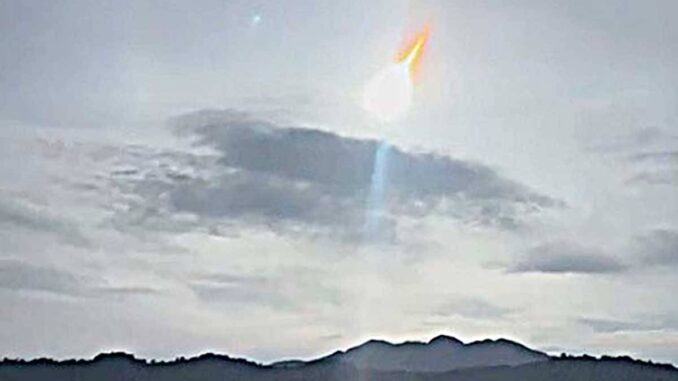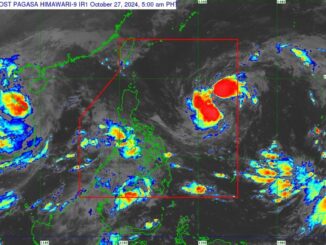
(UPDATES) A SMALL, bright meteor lit up skies over northern Luzon early Thursday as it burned up entering the Earth’s atmosphere, the European Space Agency (ESA) and witnesses said.
The one-meter (3.3-foot) space rock, named 2024 RW1, collided with the Earth’s atmosphere at 12:39 a.m. and caused a “harmless” but “spectacular fireball” over Luzon, the ESA said.
The meteor was discovered through the Catalina Sky Survey, which is run by the University of Arizona and funded by the National Aeronautics and Space Administration (NASA) of the United States.
FIREBALL In this photo grabbed from a video, a space rock dubbed 2024 RW1 is seen over Progressive village, Gonzaga, Cagayan province, on Sept. 5, 2024. ALLAN G. MADELAR VIA AP
It is only the ninth meteor that humans have ever spotted before impact.
Businessman Allan Madelar, 28, said he waited an hour in Gonzaga, a municipality in Cagayan province, to watch the meteor with a friend.
“It was mesmerizing, the color was beautiful. The sky went from black to blue-green to orange and black again,” he said.
Video clips posted on Facebook and verified by Agence France-Presse showed an orange-tailed fireball that briefly illuminated the night sky over Luzon.
Audie de la Cruz, 65, set up his camera on a bridge in Tuguegarao City, 142 kilometers south of Gonzaga, to photograph the celestial spectacle but the fireball died out before he could press the shutter.
“It was like a tadpole with a very big head, and its head was very bright,” de la Cruz said.
“I might have failed to photograph it but seeing it was a very unforgettable experience.”
The Philippine Atmospheric, Geophysical and Astronomical Services Administration described the asteroid as a “fireball.”
“Upon entry, it created a stunning fireball, visible across the skies of northern Luzon at around 12:39 a.m. Philippine Standard Time,” the weather bureau said in its Facebook page on Thursday.
The International Meteor Organization (IMO) said on its website that the small meteor came from the main asteroid belt.
“Several thousand meteors of fireball magnitude occur in the Earth’s atmosphere each day. The vast majority of these, however, occur over the oceans and uninhabited regions, and a good many are masked by daylight. Those that occur at night also stand little chance of being detected due to the relatively low numbers of persons out to notice them,” the IMO said.





Be the first to comment